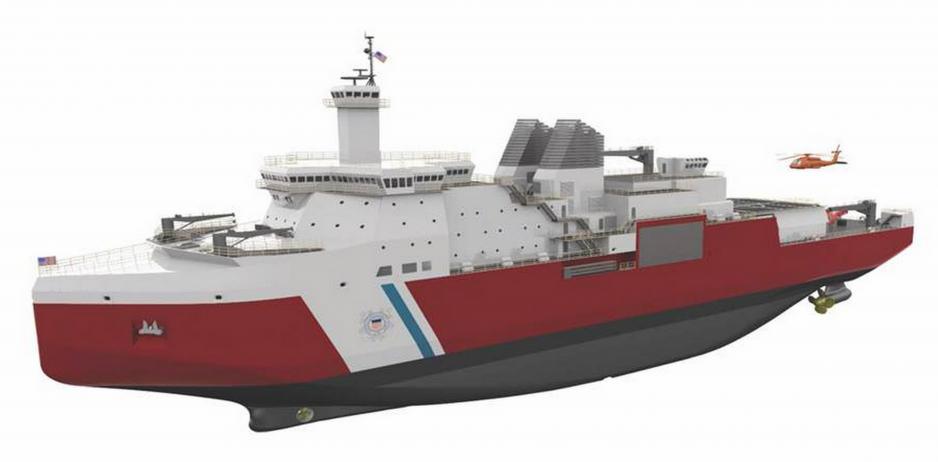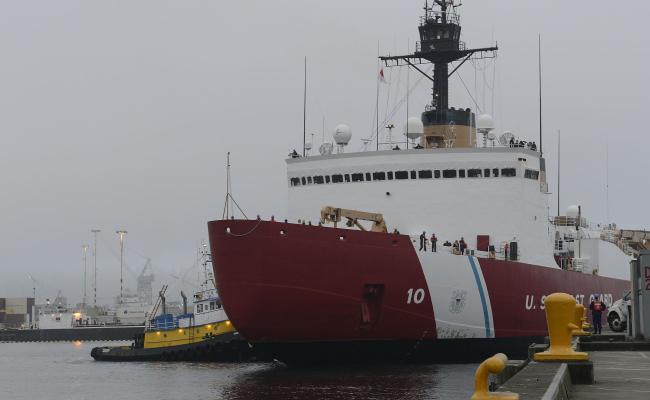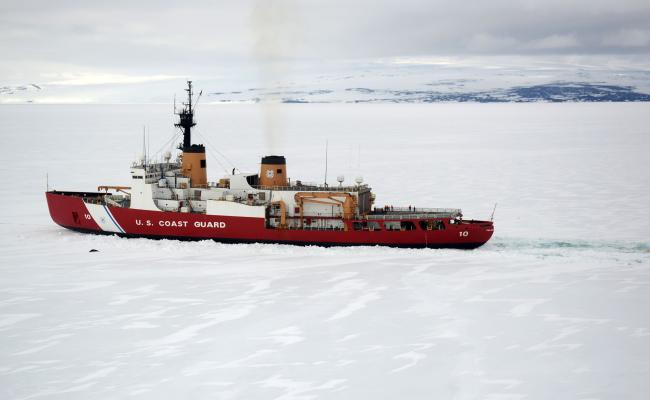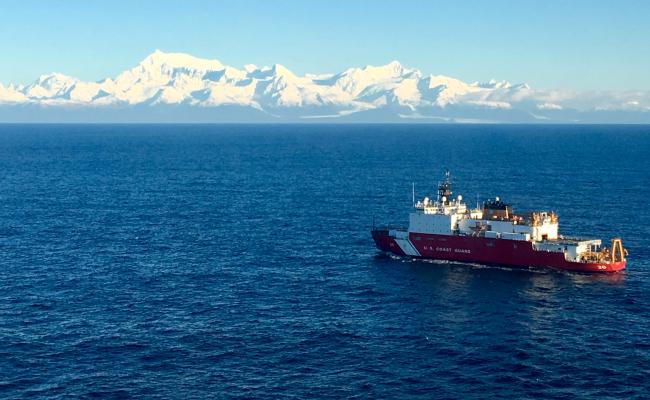U.S. Coast Guard Awards Contract for New Polar Class Icebreaker

Computer rendering of the new USCG Polar Security Cutter. (Source: USCG/VT Halter Marine)
The U.S. Coast Guard finally looks set to procure a new heavy icebreaker. But the first roadblocks, including questions about a low-price offer and lack of technical know-how, appear on the horizon.
The United States Coast Guard (USCG) awarded VT Halter Marine Inc., a shipbuilder on the Gulf Coast of Mississippi, a contract for the design and construction of the new heavy icebreaker, also known as Polar Security Cutter (PSC).
The contract is valued at $745.9 million and covers the design, engineering, and construction costs of the first of what the USCG hopes will become a fleet of six new icebreakers. According to the USCG construction will begin in 2021 and it aims to take delivery of the vessel in 2024.
At least three shipbuilders and consortia submitted bids to construct the PSC. It appears, price and not technical know-how or prior experience constructing icebreakers was the winning factor.
“VT Halter beat out at least two other bids, and at this stage we can only surmise VT Halter's bid was the most attractive from a price standpoint, as no further information is available yet. What is clear is that VT Halter did not win this bid based on experience or technical know-how,” explains Ryan Uljua, Senior Fellow at The Arctic Institute, a non-partisan think tank.
More than 10 years in the making
The USCG has been working towards securing funding for a new polar class icebreaker for at least the past decade. Currently the Coast Guard’s complement of icebreakers includes the 42-year old heavy icebreaker Polar Star which underwent an extensive three-year reactivation in 2013.
Also read
Despite this it continues to suffer from mechanical decay and requires expensive repairs on an ongoing basis. The Coast Guard’s medium icebreaker Healy is also entering its third decade of service.
After multiple requests for funding over the past decade, the USCG has now secured sufficient funding, in the realm of just over $1 billion to pay for the first heavy icebreaker in over 40 years. The largest chunk of funding, $844 million, was appropriated over the past two years.
“The Polar Security Cutter is key to our nation’s presence in the polar regions,” said Admiral Karl L. Schultz, Commandant of the Coast Guard.
“This contract award marks an important step towards building the nation’s full complement of six polar icebreakers to meet the unique mission demands that have emerged from increased commerce, tourism, research, and international activities in the Arctic and Antarctic.”
This success also speaks to the efforts of Alaska’s congressional delegation and the Coast Guard’s lobbying efforts. While the USCG’s wish list includes a total of three heavy and three medium icebreakers, it remains to be seen if it can secure the required additional funding over the coming years.
Also read
VT Halter’s first icebreaker
In addition to the winning bid, other offerings came from Fincantieri Marinette Marine (FMM), which included Vard and Aker Arctic as partners, all very experienced in the design and construction of ice-class vessels, including the construction of Coast Guard icebreakers that trawl the Great Lakes region.
Another unsuccessful bid was submitted by Bollinger, a Gulf Coast shipbuilder out of Louisiana.
Experts point to a general lack of expertise among U.S.-based shipyards when it comes to constructing icebreakers. The Healy was built at the now-defunct Avondale shipyards more than 20 years ago.
“The winner of the PSC bid, VT Halter, has no experience designing or building ice-capable ships, let alone heavy icebreakers. Given the options for up to three heavy icebreakers included in the contract, it appears the USCG is hoping to develop domestic icebreaker construction expertise "from scratch" at VT Halter on the Gulf Coast,” states Uljua.
A low-cost icebreaker?
While the $750 million price tag may sit at the lower end of expectations, experts warn of potential cost overruns. The U.S. simply does not have many examples to go off of.
I am also expecting the award will be protested.
The small commercial icebreaker and offshore support vessel Aiviq, which Edison Chouest Offshore, a shipbuilder in Louisiana, built for Shell in 2012 faced cost overruns of more than 25 percent costing $200 million instead of the originally planned $150 million.
“Some estimates put the projected cost of a single icebreaker closer to $1 billion, especially for the lead vessel in a class,” explains Uljua.
And while foreign-built icebreakers, e.g. those constructed in Finland, come with a lower price tag, this option was never feasible due to political considerations.
The VT Halter’s bid likely followed a Lowest Price Technically Acceptable (LPTA) approach thus undercutting more experienced shipyards. For the USCG, which faces ongoing budget cuts and still has to find additional funds to pay for future icebreakers, the possibility of cost-savings may have been highly attractive.
And herein may lie the first obstacle to the U.S. first heavy icebreaker in more than four decades.
“Given the stark gap in icebreaker-specific talent and experience between [VT Halter] and [FMM], I am also expecting the award will be protested. And an award protest could turn out to be the first roadblock VT Halter faces in trying to meet the Coast Guard's aggressive construction timeline," Uljua concludes.




